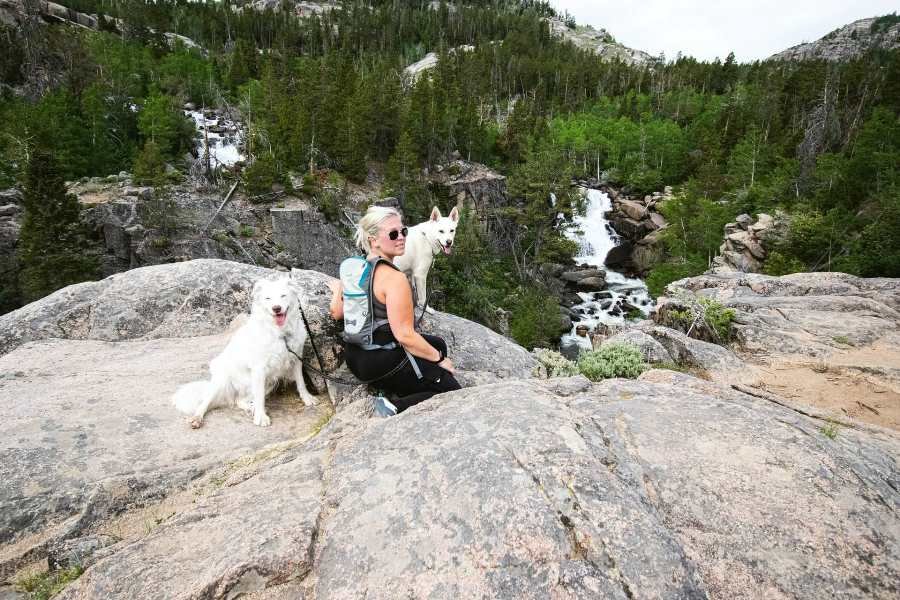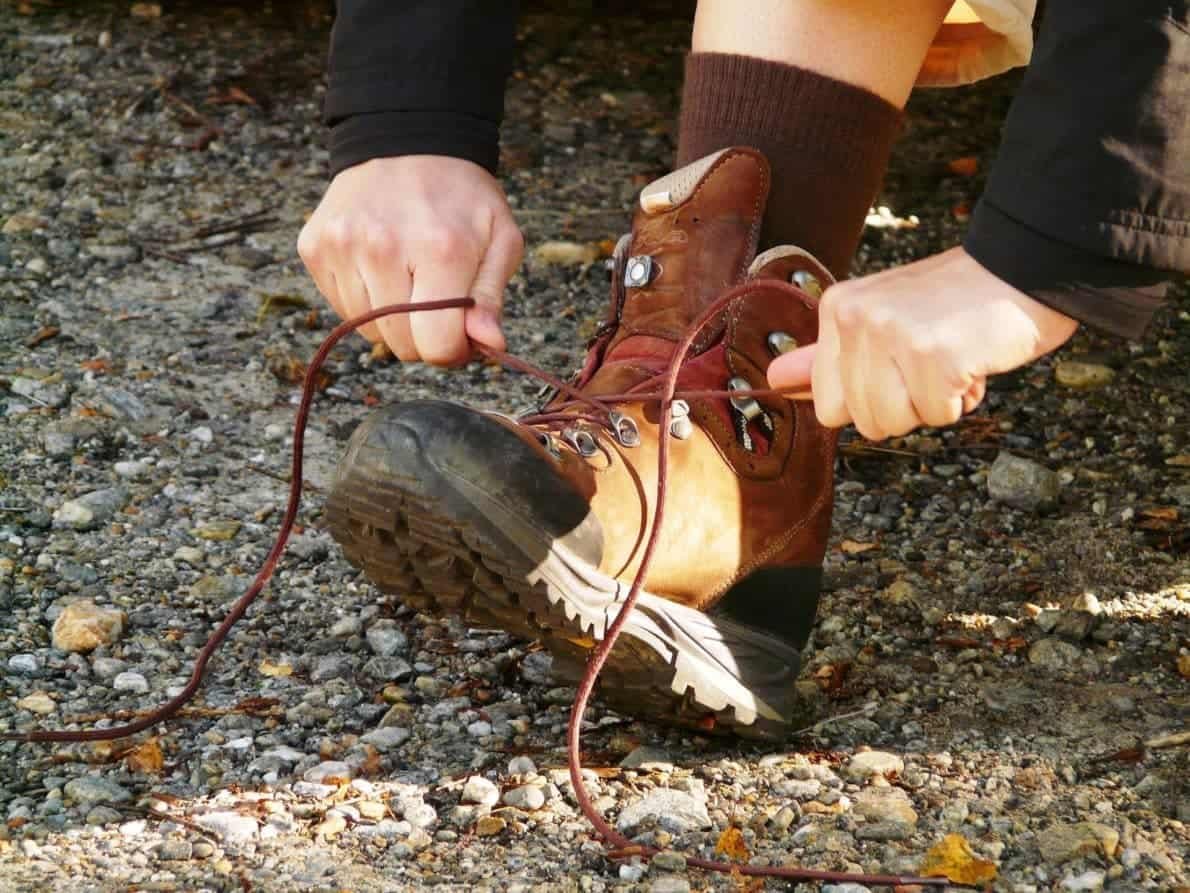Hiking alongside your pet grants you a loyal companion as well as a heightened sense of security. Similarly, it gives your pooch the chance to work out and explore new areas, something they enjoy. However, let us face it. The outdoors is not entirely a bed of roses even for the most prepared adventurer. Frankly, the likelihood of incurring an injury is super high because our bodies are only bone and flesh.
Of course, the case is not different for your furry pal even though they are four-legged. Worse still, pups tend to have an oblivious attitude without realizing how injurious the unforgiving outdoor terrain can be. Nonetheless, knowing and adequately preparing for the dangers your canine might face in the backcountry can go a long way toward curbing wounds. This article takes you through ten dog injuries that are most likely to happen on a hike.

1. Torn Paw Pads
Most pets walk without any form of protection for their paws. This exposes them to cacti as well as hot or sharp stones. As a result, when you see your pup limping or holding its paw up, the pads could be lacerated. The ultimate protection against paw injuries is a quality pair of dog booties. Moreover, you can apply paw pad cream to the torn area. Most importantly, understand the condition of the terrain before setting a course.
2. Broken Nail/Bones
Dogs might be fearless but they are not invincible. Fights can be deadly to any animal. The fact that you do not see any limp doesn’t necessarily imply that your pooch is okay. There could be brushed ribs, broken nails, or fractured bones. Some tell-a-tell signs of an internal injury include swelling, inability to walk, and whining pain among others.
Apart from fights, your pet could break its nails or sprain a leg. If you hike close to a road, the risk of a car accident is high. Injuries from a car accident can be fatal to your pet. This is since the impact is likely to go beyond broken bones. In fact, the damage might extend to bruised lungs, diaphragmatic ruptures, and other internal tears that can pose a great risk to your doggie’s life. As a consequence, if you suspect that the animal has suffered a broken bone or nail, get it to a vet for evaluation. Obedience training will come in handy in making sure the canine does not wander off.
3. Back Trouble or Lameness

This sought of injury might be genetic related. Some dog breeds are not built for long walks. Tiny dogs with long backs such as basset hounds, corgis, and dachshunds are susceptible to back trouble. This arises from slipped discs that might be caused by long jumps. Obesity is another factor that contributes to back problems. Thus, weight management is crucial. Likewise, ensure the aforementioned dog breeds are limited to short hikes.
4. Cat Bite Abscesses
When a dog gets into a brawl with another animal it is likely to suffer bruising, bleeding wounds, or skin lacerations. Most of these injuries turn out to be superficial and heal in a short time. However, if your pet fights with a cat it could result in abscesses. Cat bites are tiny and hence difficult to spot and tend to. Consequently, the skin tissue will close over the bite marks and in the process trap contaminants or bacteria. The outcome is swollen wounds that become painful when opened. On the bright side, abscesses can be treated by antibiotics or by flashing.
5. Heat Stroke

Dehydration can be a real pain in the neck for anyone, let it be animals or humans in the backcountry. It is a problem that is synonymous with hot weather. That is why you are advised to pack up extra water for your dog when you go hiking together. Moreover, the biggest red flag of an impending heat stroke is when your dog keeps panting heavily.
Dehydration is more pronounced in dogs that are short-faced, overweight, or elderly. Moving on, the first step to salvaging a dehydrated dog is to take it to a cool place as soon as possible. Thereafter, you will have to fun it or spritz it with water. Nevertheless, if your pet keeps struggling despite your first-aid efforts, get it to a specialist. Other than that, ensure you take frequent breaks when adventuring on a hot day.
6. Eye Trauma
Dogs adore the outdoors as it comes with a sense of freedom. Naturally, they will move around a lot sniffing and exploring the surrounding. Yet, while you will probably have your sunglasses on, the safety of your pooch’s eyes, unfortunately, depends on luck. A dog’s eyes are quite vulnerable to dirt not to mention bites from other animals or scratches from the jungle under the bush.
Well, the trauma could range from a simple abrasion or corneal scratch to severe injuries like globe ruptures, perforations, or corneal ulcers. Cat scratches can be quite damaging to your furry friend. It is easy to tell when your dog has an eye injury. In most cases, they will be teary or swollen. Likewise, your pet’s eyes will be blinking a lot and the pooch will not want them to be checked. You can clean with warm water if dirt is lodged in the eyes. Otherwise, visit the veterinarian if the trauma is too serious.
7. Allergic Reactions

Like humans, dogs are allergic to different things among them bug bites, new foods, plants, and grass. Venturing into the jungle will be a major challenge for any animal with allergies. The signs to look out for in an allergic pup include redness of the skin, sneezing, itchiness, and a puffy face. Keen dog parents should have prior knowledge of their pet’s allergies before hitting the road.
If you fall into this class of responsible dog owners, do not leave your house without the pooch’s allergy medication. On the flip side, your pooch will be helpless if it suddenly experiences an allergic reaction while hiking. Fortunately, dog-related allergies are not life-threatening. Your best bet in this scenario is to visit your vet for an antihistamine prescription for the pup.
8. Bites/Scratches from other dogs
When in the jungle, your dog could probably rub shoulders with wild animals or other pets. The eventuality of such encounters is quite unpredictable given that different creatures have different temperaments. Wild animals are particularly aggressive and defensive of their territory. Therefore, if your furry friend comes upon such beasts the outcome would be a deadly scuffle.
Remember, it is advisable to stay away from animal fights. Instead, find other ways to break it up. To be on the safe side, wait for the incident to die down before tending to your pooch. Regardless of the strength or size of your animal, it is going to suffer a couple of bites or scratches. If your dog is injured in an unprecedented fight, apply pressure to the wounded area to stop bleeding. Needless to say, you might have to seek the help of a vet if the injuries are deep. The primal way to avoid similar experiences is to keep your dog on a leash at all times when hiking.
9. Foreign Body Ingestion

Dogs are adventurous creatures that will try to bite or eat anything either when hungry or simply for the fun of it. This includes bones, toys, sticks, and so on. Unlike the home environment where most objects are safe and dog-friendly, the trail is full of foreign stuff that might be dangerous to your pup.
Even if the object is not poisonous, it might cause other harm. To keep such accidents at bay, keep a close eye on your pooch. If you see it biting on an unknown object, try to snatch it from the dog’s mouth. In the event that you do not pull through with that, try to monitor its behavior. Normally, it will vomit when a large body is stuck in the mouth. In a worst-case scenario, the swallowed object could remain in the dog’s intestine. This is where you seek expert help. Such inconvenience can be abated if your pet is well-fed and close to you at all times.
10. Sun Burns
Just like humans, dogs are susceptible to sunburns. This is an injury that your animal will potentially get during summer or spring. Apparently, prolonged exposure to excess sunlight is not good not just for your skin but also for the dog’s skin. Furthermore, the extent of the damage resulting from sunburn will vary from one dog breed to another. This is hugely anchored on the breed’s coat. White dogs with thin hair or a hairless coat are in the greatest danger.
Nevertheless, even dogs with thick fur tend to suffer some skin damage as well. Whenever the pooch’s skin has sunburn, it turns pink. Therefore, move it to a shady area the moment you notice this. The only way to keep your dog safe from sun-related injuries is to apply dog or child-safe sun protector spray or cream to the affected area. In the same way, it is prudent to avoid hiking under extreme sunlight for a prolonged duration. Primarily, do not forget to book an appointment with the vet in case the dog’s skin turns red from the sunburn.
Conclusion
Indeed, dogs may be light on their feet, fearless, and enthusiastic but there is a limit to what their bodies can take. This is coupled with their carefree nature which can transform into life-threatening injuries on the trail. Be that as it may, you are now aware of the dangers that might afflict your pet when in the backcountry. Take every precaution measure for a hassle-free and injury-free hiking experience. Above all other protective measures, it is imperative to keep your pooch close by when in the backcountry.




